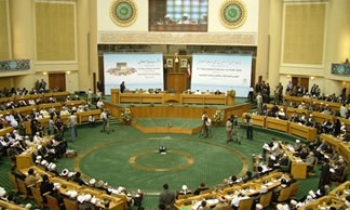I'd like to think the reason so many people have been asking me if I have a blog is because they love my writing so much they just can't get enough. But it's more likely just another sign of how influential the form is becoming, particularly in the environmental world. Still, it has made me wonder if it's time for me to get on the bandwagon and start blogging.
"Don't do it, man, it's a time suck," David Roberts wrote me in an instant message. Roberts should know: He's the founding editor of Gristmill, one of the most prominent of the emerging green blogs.
With just a couple of years of continuous publication under their belts, the biggest green blogs now routinely attract more readers than most environmentally oriented print magazines. The free-form exchange among these bloggers and their readers has become an important part of the public dialog on environmental matters.
"There's been a little bit of a perfect storm here," says Alex Steffen, founder of Worldchanging, the most widely read green blog. "At the same time that blogging has taken off, we've also had a real zeitgeist shift where suddenly the idea of living in a green and prosperous way is really hot. Climate change has become a big issue. A lot of people are interested in green building, green fashion, green product design."
Steffen, whose site has about 20 regular contributors and gets 800,000 visits each month, likens green blogs to an ecosystem. "There are 40 or 50 sites which are really excellent," he says, citing favorites like Inhabitant and Next Billion, adding that "there are a whole bunch more that are more like personal sites that routinely do good stuff."
Technorati, the most authoritative blog index, lists more than 700 environmental blogs. They include big, magazinelike group blogs like Worldchanging and Gristmill, popular personal sites like City Hippy, offshoots of mainstream organizations like Sierra Club Executive Director Carl Pope's blog, forums for little-heard perspectives like Environmental Republican and shopping blogs like Greatgreengoods.
"Sustainability is reaching a tipping point in the culture at large," says Nick Aster, the blogger behind Triple Pundit, a site devoted to the theory and practice of green business. Aster is also a contributor to Treehugger, a popular green lifestyle blog that, along with Worldchanging, was one of two green blogs nominated for an award at the prestigious SXSWi conference in Austin last week.
The green blogosphere is filling a gap in mainstream media, says Worldchanging's Steffen, who is a journalist by training. "In the interest of 'fairness,'" he says, "journalists are obliged to give somebody who is doing something awful, or who holds a distinctly minority scientific opinion, a voice equal to that of those who are trying to alert people to a problem purely out of public interest." On Worldchanging, Steffen is free of that constraint.
Bloggers like Steffen and Roberts acknowledge that the editing and fact-checking process mainstream media offerings go through does have an important role, particularly in investigative efforts. But they add that the immediacy and flexibility of blogging allow active debate and collaborative consensus building over a wide range of topics in a way that is not possible in traditional media.
If old-media offerings have some claim to authoritativeness -- think of the New York Times' century-old motto "All the News That's Fit to Print" -- blogs are more about process. They put out information and opinions with the goal of generating discussion and providing the space for people to test their own ideas.
Indeed, Roberts says that when he was starting Gristmill he was concerned about the blog's alternative journalistic standards. But he found that readers themselves asked the questions that editors and fact checkers might at a magazine.
"Having thousands of readers bird-dogging you keeps you pretty honest," he IMs, likening green blogging to the pamphleteering tradition of early American journalism 200 years ago. Anyone can say anything, but it has to stand up to the scrutiny of an involved readership to get much traction.
"The cream still rises to the top," says Joel Makower, a contributor to Worldchanging as well as his own widely read blog, Two Steps Forward. Makower is a Bay Area-based journalist who has been writing about green business for more than 20 years.
"One of the realities of our day and age is that as communication and media flourish," he says, "discourse is happening in a lot more places. And good ideas flourish no matter where they come from."
Blogs provide a way for readers to examine environmental issues more completely and to form their own positions on the matters of the day. A perfect example is the way that climate change has been treated in the green blogosphere.
Green blogs let readers go beyond the headlines by hearing directly from climate scientists as well as the dwindling breed of climate skeptics. They are places to discuss the best ways to advocate for climate action and even to learn about completely different takes on the situation.
"A good thoughtful debate attracts a cyber crowd, and people want to weigh in," says Makower. "It's a democracy, and people are voting with their computer mice."
Still, the community behind the green blogs is relatively narrow. Most of the people at the biggest green blogs are highly educated, and most are men with a tendency toward wonkiness. (One notable exception is GreenLAGirl, an informative site that not only presents the viewpoint of an environmentally engaged young woman, but is an introduction to the often-overlooked world of environmental consciousness in Los Angeles.)
At a minimum, blog participation requires basic computer literacy and access, and the medium appeals most to people who communicate via the written word, so part of this limited -- for now -- scope is perhaps inevitable. But that doesn't explain why so many green bloggers are men, especially considering the pervasive presence of women in both the blogosphere and the environmental movement.
There are geographical limits on the world of green blogs as well. "It's the Seattle-Brooklyn-San Francisco triad," says Steffen, who is based in Seattle. (Contributors to the Worldchanging site are concentrated in these areas, but some are also in Toronto, Paris, Mumbai and elsewhere.) "I think part of it is that the new environmentalism is very culture conscious and those are three of the leading cities in America for people who are future-forward. All three are also tech hotbeds."
This ferment has helped raise the profile of green issues more generally. Stories that have been incubating on green blogs are starting to make their way into mainstream media.
"I know for a fact that a great number of our readers are journalists and academics and NGO people," says Steffen.
"We have seen with some regularity stuff that we have pushed hard on starting to become much more mainstream. The fact that journalists are out there paying attention to blogs now and using blogs as a research tool means that if they see something done well, explained well and frequently mentioned, they're much more likely to pick it up and run with it."
And the blogs themselves are starting to enter the territory of old media: A few green blogs are even providing jobs for their creators. Gristmill is the blog adjunct of Grist, the respected online environmental magazine (I write for Grist from time to time), so Roberts is technically an employee of the magazine, although he says he has complete editorial freedom.
Worldchanging, which was incorporated as a nonprofit just a year ago so it could accept foundation grants, now pays key staff like Steffen, although writers are not (yet) paid. And later this year, green blogs will take an even more definitive step into the world of mainstream media: A collection of essays on sustainable solutions from Worldchanging contributors will be published as a book, on actual paper.
But for most of the green bloggers, blogging is its own reward. Sustainablog's Jeff McIntire-Strasburg, for example, is the epitome of the noble Jeffersonian citizen-blogger: a concerned individual with something to say and a knack for saying it just the right way. The former English professor lives in Saint Louis and writes his highly regarded blog in his spare time. Even Treehugger, considered by many bloggers to be the Web's premier guide to stylish green living, is funded by founder Hill's successful Web and design businesses.
So do I need a blog? This column already has certain bloglike elements: It appears only online and has an RSS feed, even though it's carefully scheduled and edited on the tried-and-true old-media model. Many of the topics covered here are exactly the things you might find on Worldchanging or Gristmill. It's a crowded field, and as the lines continue to blur, maybe that's the wrong question to ask. Maybe the right question is, How long before it becomes a blog?
Gregory Dicum, author of Window Seat: Reading the Landscape from the Air, writes about the natural world from San Francisco. A forester by training, Gregory has worked at the front lines of some of the world's most urgent environmental crises. For more of his work, see www.dicum.com/list









